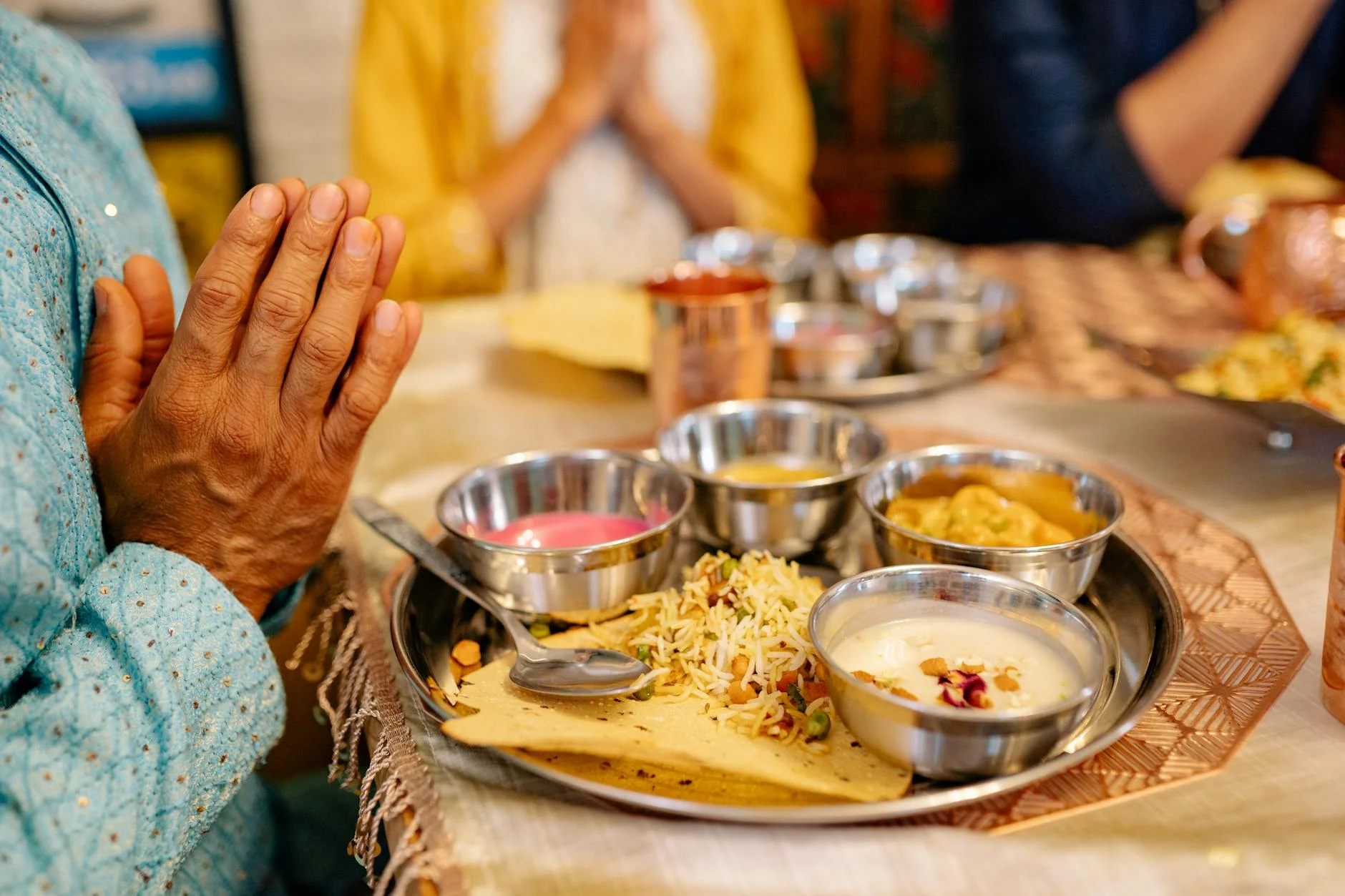In Japanese meal ritual, the simple act of pressing one’s palms together and quietly saying itadakimasu before eating is so ingrained that its profound meaning often goes unconsidered. Yet this single phrase encapsulates the depth of Japanese food culture, reflecting an inherent mindfulness, aesthetic consciousness, and profound respect for life.
Itadakimasu is far more than a declaration of “I’ll start eating.” Etymologically, it derives from itadaku, meaning “to receive with honor,” akin to accepting something above us. It expresses gratitude toward the ingredients, the hands that prepared them, and those who brought them here. More fundamentally, it acknowledges that we are receiving life—whether animal, fish, or plant—to sustain our own.
Whether derived from animal, fish, or plant, all food once carried life. To eat is to embrace another being’s vitality in order to sustain our own. To fully acknowledge this truth, itadakimasu is spoken as a silent prayer—a moment of reverence for the life before us.
This way of thinking is deeply influenced by Buddhism. The principle that all life is sacred—and humans are merely one form among many—is central. In monastic practice, before meals, monks recite the Gokan-no-ge, reflecting on five contemplations: the myriad conditions leading to the meal, the labor behind it, the gift of life itself, the effort of preparation, and the discipline to avoid indulgence. Through this ritual, they honor the earth, acknowledge the lives given, express gratitude for those who labored, and remind themselves to practice restraint.

In Japanese homes, children learn to say itadakimasu with folded hands from a young age. This practice is far more than religious ritual—it is an educational moment fostering mindfulness toward the sanctity of life. Much like “thank you,” itadakimasu is rooted in gratitude; yet it carries a deeper ethical awareness—that eating means consuming life.
In today’s era of mass production and mass consumption, food is often reduced to “products” or “calories.” Convenience meals, frozen foods, and dining out become routine, with little thought given to the hands and lives behind them. Yet each dish before us embodies life consciously cultivated, brought forth, and offered—this is precisely what itadakimasu recognizes.
Indeed, experiencing agriculture or fishing firsthand transforms this perspective. Tilling soil, planting seedlings, enduring weather to grow crops; venturing to sea, catching fish, sorting, transporting, and preparing them—it is through understanding these processes that itadakimasu reveals itself not as a mere habit, but as a vital expression of respect and gratitude for life.
In an era where discussions around eating animals—whether for or against—are increasingly prevalent, the perspective of “receiving life” has emerged as a central pillar in food ethics. As conversations around animal welfare, sustainable fisheries, food waste, vegetarianism, and veganism grow in prominence, acknowledging differing values becomes vital. Yet beneath these diverse viewpoints lies a shared truth: food embodies cycles of life, and we all participate in that universal flow.
This consciousness is central to food education as well. In Japanese elementary schools and preschools, saying itadakimasu in unison at the start of every meal is more than a ritual—it is a moment of collective intention. Before food is served, discussions often begin with “who prepared it” and “where it came from,” encouraging students to connect with the journey behind their meal. Through this dialogue, children learn the importance of recognizing the gift of life in every bite.

The phrase itadakimasu holds another profound layer: an awareness of being sustained. Eating is the most fundamental act to continue our own life—not just physically, but in recognizing the network of presence supporting us. To receive life through food is also to face our own mortality.
In our busy routines, meals often happen in auto‑pilot—scrolling through our phones, watching TV, or chatting while eating. Yet pausing to bring our hands together and fully voice itadakimasu brings a moment of clarity to our hearts. It’s a time to reflect on who we are and a moment of honoring life itself.
Around the world, many cultures begin meals with prayer—each varying in religious form, yet united in the spirit of gratitude. In Japan, itadakimasu stands apart: not bound to a specific faith, but deeply rooted in daily social practice. Its uniqueness lies in its universality—a simple phrase that reminds us of shared human values, at once personal and broadly resonant.
Itadakimasu is a prayer. A moment where we consciously receive the meal before us, not merely as sustenance, but as a living form—and we honor it as such. In this act of gratitude and respect, we build a silent bridge: between humanity and nature, and between one person and another.
Acknowledging the profound truth that our existence depends on the life of others—and living with that awareness—is an act of mindfulness. In every day’s meal, itadakimasu serves as the first step toward engaging with food with sincere intention. That simple phrase deepens the meaning of eating and enriches the quality of our lives.




